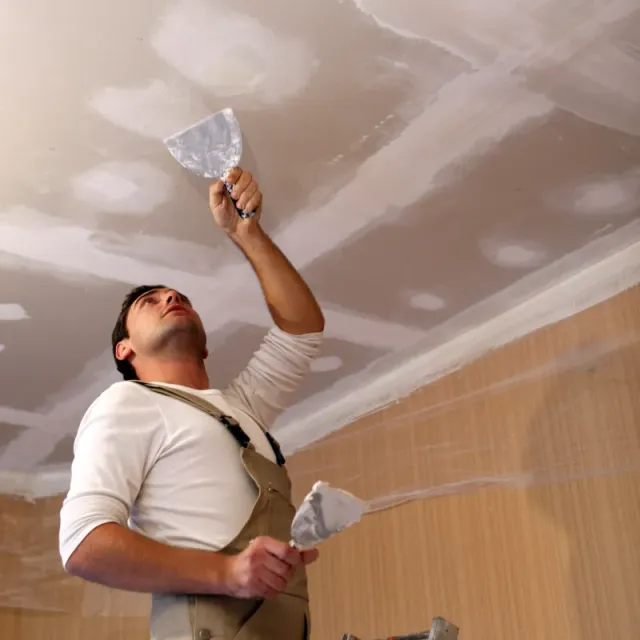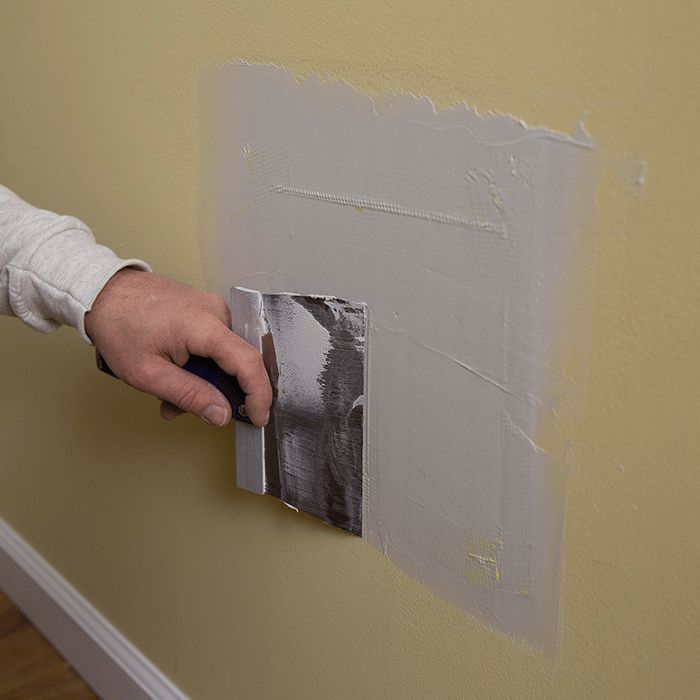Discover the Best Practices for Effective Drywall Repair Work and Installation
The art of drywall repair work and installation calls for a blend of ability and precision. Mastering the vital tools is vital for attaining a smooth finish. Comprehending the detailed process can make a substantial difference in the result. Proper techniques for taping and mudding are likewise crucial. What stays is the understanding of maintenance that guarantees longevity. These components with each other develop a refined result worth discovering better.

Necessary Devices for Drywall Repair Service and Setup
When carrying out drywall repair work and installation, having the right tools can substantially improve the efficiency and top quality of the work. An energy knife is important for reducing drywall sheets precisely, while a drywall saw can help in making a lot more complex cuts. Taping knives, readily available in numerous sizes, are important for using joint substance smoothly and uniformly. A drywall sander, ideally with a dirt collection attribute, assists accomplish a sleek coating, decreasing the demand for considerable clean-up.
Furthermore, a measuring tape guarantees precise measurements, and a level guarantees that setups are straight and plumb. Safety and security equipment, consisting of dust masks and safety glasses, need to not be overlooked to protect versus debris and dust. A stud finder help in situating mounting participants, assuring secure setup. By gearing up oneself with these crucial devices, the repair service and setup procedure comes to be much more workable and causes a professional-quality end result.

Step-by-Step Overview to Patching Holes
Patching openings in drywall calls for a systematic technique to ensure a smooth repair service. Initially, the location around the hole have to be cleaned and any kind of loosened debris removed. For tiny openings, a putty knife can be utilized to use a lightweight spackle, pushing it right into the hole and smoothing the surface. After it dries, sanding is vital to create a flat coating. For larger openings, a patch of drywall might be required. This involves reducing a piece of drywall slightly larger than the hole, safeguarding it to the wall surface with screws, and utilizing joint substance to cover the seams. As soon as the compound dries out, it should be sanded smooth. Topping the patched location before painting will ensure an also surface. Adhering to these actions will certainly cause a professional-looking repair service that blends flawlessly with the bordering wall.
Techniques for Seamless Drywall Installation
Achieving seamless drywall setup needs mindful preparation and execution. First, it is important to measure and reduce drywall sheets properly to lessen voids. Utilizing an energy knife, installers ought to rack up the board before breaking it along the cut line, making certain tidy sides. Appropriately straightening the sheets is crucial; beginning from the top and functioning down aids maintain uniformity.
Fastening drywall to the studs requires constant spacing, typically every 16 inches, making use of screws instead than nails for far better hold. This strategy lowers the risk of pops over time. Furthermore, staggering the seams in between sheets improves structural honesty and lowers the exposure of joints.
Finally, making use of the best density of drywall for details areas-- such as moisture-resistant types in bathrooms-- further adds to a perfect surface. Complying with these methods will certainly lead to a professional-looking and smooth installment, establishing the stage for the succeeding completing processes.
Finishing Touches: Taping and Mudding
Finishing touches, such as taping and mudding, play a necessary duty in achieving a refined drywall surface. Insulation entails applying a slim strip of drywall tape over the joints and seams, making certain a seamless appearance. This process helps prevent splits and develops a strong bond in between drywall sheets. It is essential to pick the best sort of tape, with paper and fiberglass mesh being one of the most typical alternatives.
Mudding, or using joint compound, follows taping. This compound fills out gaps and ravel the surface area for a consistent surface. It is commonly applied in several layers, with each layer needing to dry prior to sanding. Appropriate strategy involves feathering the sides to mix the compound into the bordering drywall, lessening exposure.
When finished appropriately, taping and mudding enhance both the structural and aesthetic integrity of the drywall setup, causing a professional-quality coating.
Tips for Keeping Your Drywall After Installment

In addition, maintaining a consistent indoor moisture degree can prevent warping or mold and mildew development. Making use of a dehumidifier in damp locations, like basements, is a good idea. It's also valuable to occasionally repaint areas that reveal wear, as this secures the underlying material. When moving furnishings or setting up fixtures, care needs to be exercised to avoid damaging the drywall. By following these maintenance ideas, property owners can prolong the life of their drywall, guarding it remains an eye-catching function of their insides.
Frequently Asked Questions
What Security Gear Is Necessary for Drywall Repair and Installment?
For drywall repair work and installation, vital safety and security equipment includes safety and security goggles to shield eyes, dirt masks to avoid inhalation of bits, handwear covers for hand security, and knee pads for comfort throughout extended kneeling. Drywall Installation Ogden Utah.
Exactly how Do I Determine the Drywall Thickness Needed for My Task?
To identify the drywall thickness needed for a task, one ought to take into consideration the wall's architectural requirements, regional building ordinance, and the planned usage of the space, generally selecting 1/2-inch or 5/8-inch drywall.
Can I Repair Drywall Without Removing Furniture From the Area?
Yes, drywall can be fixed without eliminating furniture from the space. Cautious planning and safety steps can decrease mess, allowing for reliable repairs while keeping surrounding things safe from dirt and damage throughout the process.
What Sorts of Drywall Are Finest for Different Settings?
Moisture-resistant drywall is perfect for kitchen areas and bathrooms, while soundproof drywall suits shared walls in houses. Fire-rated drywall is best for garages, and standard drywall works well in general living locations, guaranteeing sturdiness and suitability for various settings.
How much time Does It Take for Drywall Mud to Dry Entirely?
Drywall mud typically takes 24 to 48 hours to completely dry totally, depending upon elements like humidity and temperature level (drywall contractor). Thicker applications might call for longer drying out times, while thinner layers can dry out much more quickly. Proper ventilation aids drying
The art of drywall repair work and installment requires a mix of ability and precision. When carrying out drywall repair work and setup, having the right devices can considerably boost the performance and top quality of the work. An utility blade is essential for reducing drywall sheets specifically, while a drywall saw can assist in making much more elaborate cuts. Achieving seamless drywall setup demands cautious preparation and implementation. Moisture-resistant drywall is perfect for restrooms and kitchen areas, while soundproof drywall matches shared walls in apartments.